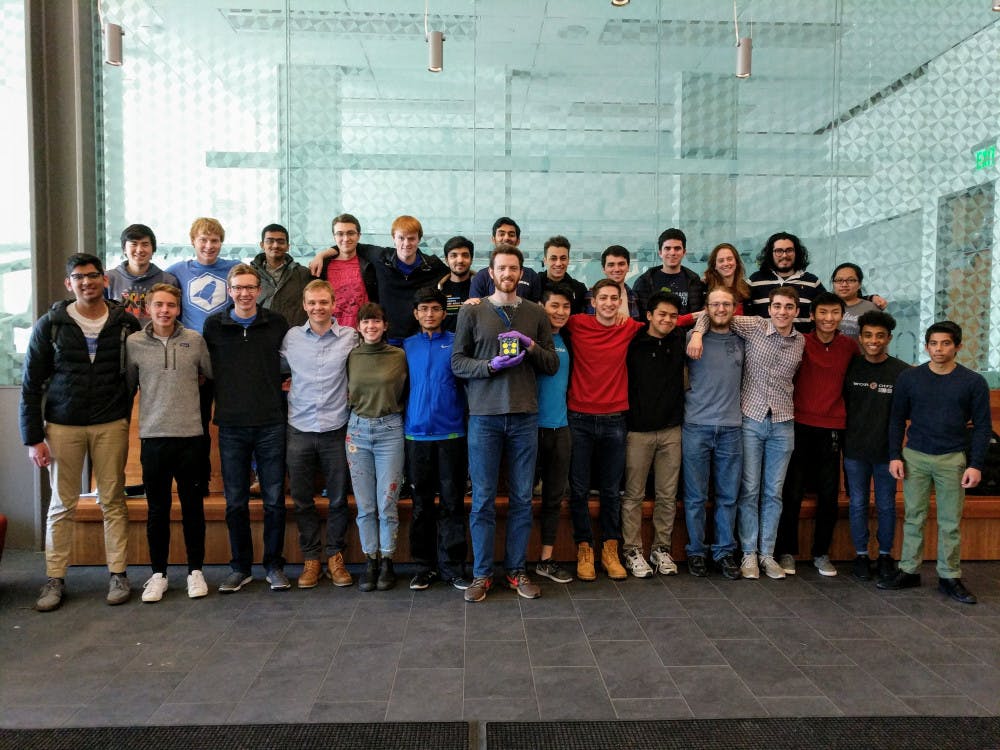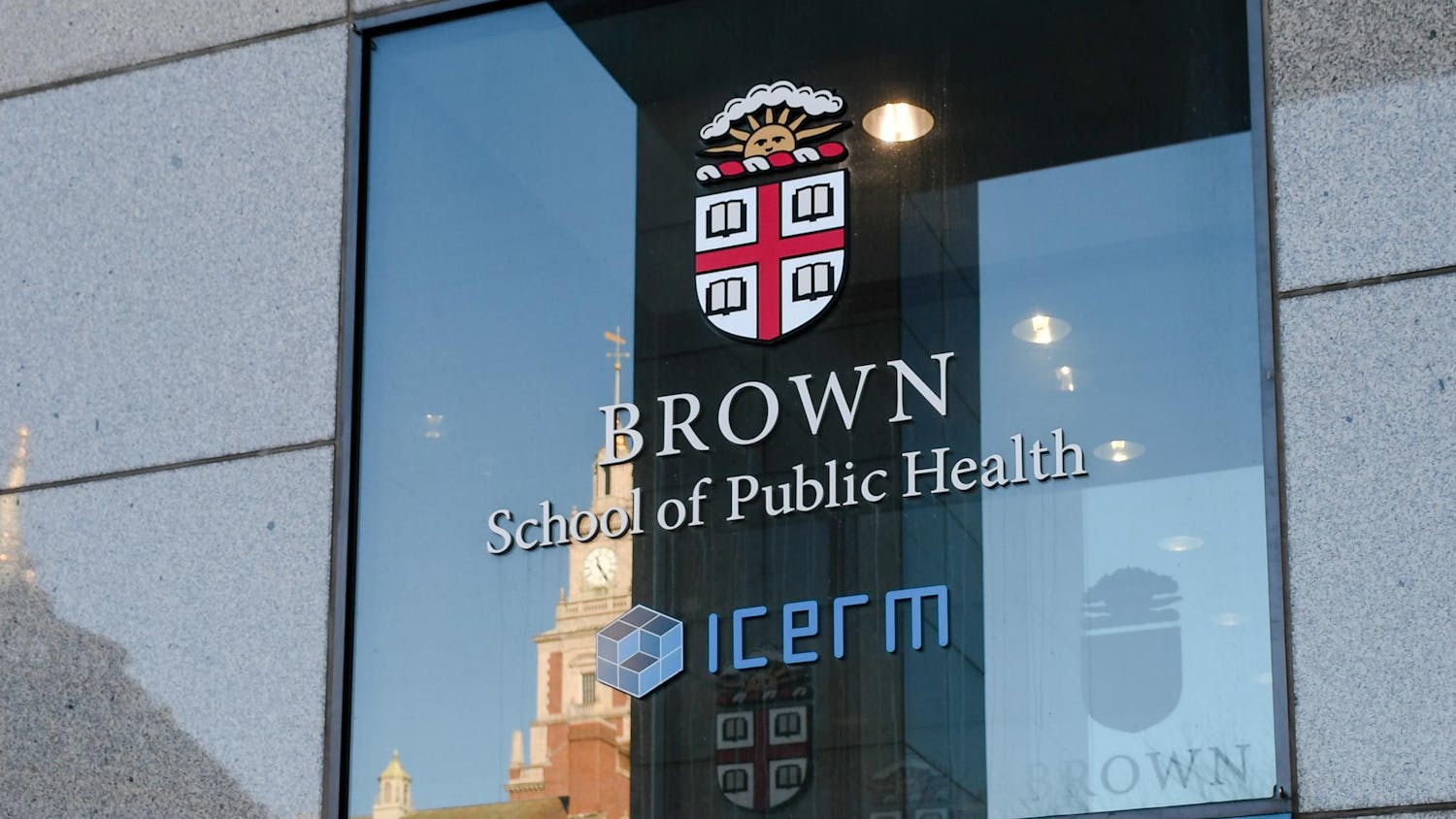Since its conception nearly seven years ago, a continuously revolving group of University undergraduates has been diligently working to send a satellite into space. Now, as May 9 draws closer, the group of over 200 past and current students and faculty can find catharsis as the EQUiSat will finally launch into orbit.
The project, funded by NASA’s CubeSat Launch Initiative, will send a small cube satellite to the International Space Station to then launch into orbit. The EQUiSat will test lithium iron phosphate batteries, which are used in machines such as lawn mowers, but find limited applications in spacecrafts. Due to its low cost and the fact that its latitude will coincide with that of Providence, which allows its LED flashes to be seen from the ground, the satellite will also serve as a symbol for the accessibility of space.
“A big part of the goal is proving the accessibility of space. … We kind of want to show people that space is right there,” said Hunter Ray ’18, the project’s co-leader and team manager. The project could have cost upwards of tens of thousands of dollars, but the team has kept its cost to just $3,776.61, Ray added. The project’s relatively low cost and mantra to “build it from the ground up” speak to the feasibility and accessibility of space.
The EQUiSat will be equipped with powerful LED lights, a small radio and multiple sensors to keep track of its trajectory and control steering. “Anyone with a hand radio can pick up its frequency. … We will be relying on the community of amateur radio (groups) around the world to help collect EQUiSat’s data,” Ray said. He described the construction process as his favorite part of the project. “It’s like a Lego set. You build it and you’re like ‘great, now what do I do,’ … but the mission will keep going.”
Ray has been a part of the project since he arrived on campus. “I started freshman year, first week … (I decided that) I want to build a spacecraft,” he said. “I ended up taking over for the power system development, … (and then) I was elected as part of the project’s manager and co-leader of the team,” he added. He hopes to see similar projections come together in the future following the EQUiSat’s launch. “The fact that as undergraduates we have been able to build an entire spacecraft from scratch … (it shows where) we are going with the space program, as humanity is progressing into the final frontier,” he said. Ray will be delivering the EQUiSat to Houston this week in order to facilitate preparations for the launch.
Anand Lalwani ’18 leads the power team, the group of 17 team members in charge of the EQUiSat’s solar power and battery construction. “We are a group of incredibly motivated, but incredibly fun people. Yes, we have had our arguments and fights, but we still work very well with each other,” he said. The power team not only constructed solar panels from scratch, but also ensured that they would survive a launch. Eventually finding a coating and the means to apply it to protect the delicate panels was a grueling process, Lalwani said. “We tried (different protocols) for about 12 months, … and we failed consistently,” he said. Finding a solution “was probably (Brown Space Engineering’s) biggest achievement,” as no other satellite group in the country had done this, he said.
The project also serves as an outreach symbol, Lalwani said. By talking to both middle school and high school students and teaching them about different aspects of engineering, the team hopes to show children that space is not as far-fetched as it may seem. “What we had pitched to NASA in our original mission was that ‘We are going to make space cool again,’” Lalwani said. He hopes to see BSE continue its work with new satellites being constructed in under two years.
“For BSE, our future is very bright. … All our future applications for launches such as this will be very likely granted. … We expect all the sophomores in our team to have a satellite they would have designed and built and launched before they graduate from Brown,” he added.
Max Monn GS, one of founders of the initial project, worked on the project from its initial creation in 2011 to 2013. “Since the manned space missions to the moon … (the public) had a declining interest for space” due to the lack of human connection, Monn said. The origin for the project began as a means for creating an idea in Adjunct Associate Professor of Engineering Rick Fleeter’s class, which has since evolved into ENGN1760: “Design of Space Systems,” Monn described. While other projects leaned toward theoretical concepts or plans such as the colonization of Mars, Monn and the other founders decided to plan something which was “down to Earth” and did not need a large corporation to complete, Monn said.
The EQUiSat’s LED lights flashing down toward Earth show the accessibility of space, one of the project’s main purposes. This element was inspired by Monn’s interest in photography. Following the initial work, the project expanded from a four-person class project to a student group. “We weren’t really sure how it would be received,” he said. At the first information session, 15 to 20 people showed up. Seeing the growth of the group has been one of Monn’s favorite memories of the project. “It feels like a legacy,” he said.
Serving as founder, member and mentor, Monn has seen the project evolve from “wires spread out on a table” to its eventual launch. “We had these visions of what it could be and to have left the project in such shambles … (and) having it become more and more real… (it’s) a pleasant surprise,” he said.
“You don’t need to be a multi-millionaire, you do not have to be a rocket scientist, and space is not that far,” Lalwani said. The satellite will serve as a realization that the final frontier is truly not as far as it seems, he added. “EQUiSat is reaching down to everyone on the Earth and showing them that space is right there, and I hope that, in a sense, it helps unite everyone together,” Ray said.
Correction: An earlier version of this article stated that Max Monn GS has worked on the EQUiSat since the project's creation in 2011. In fact, Monn worked on the EQUiSat from the creation of the project in 2011 to 2013. The Herald regrets the error.





